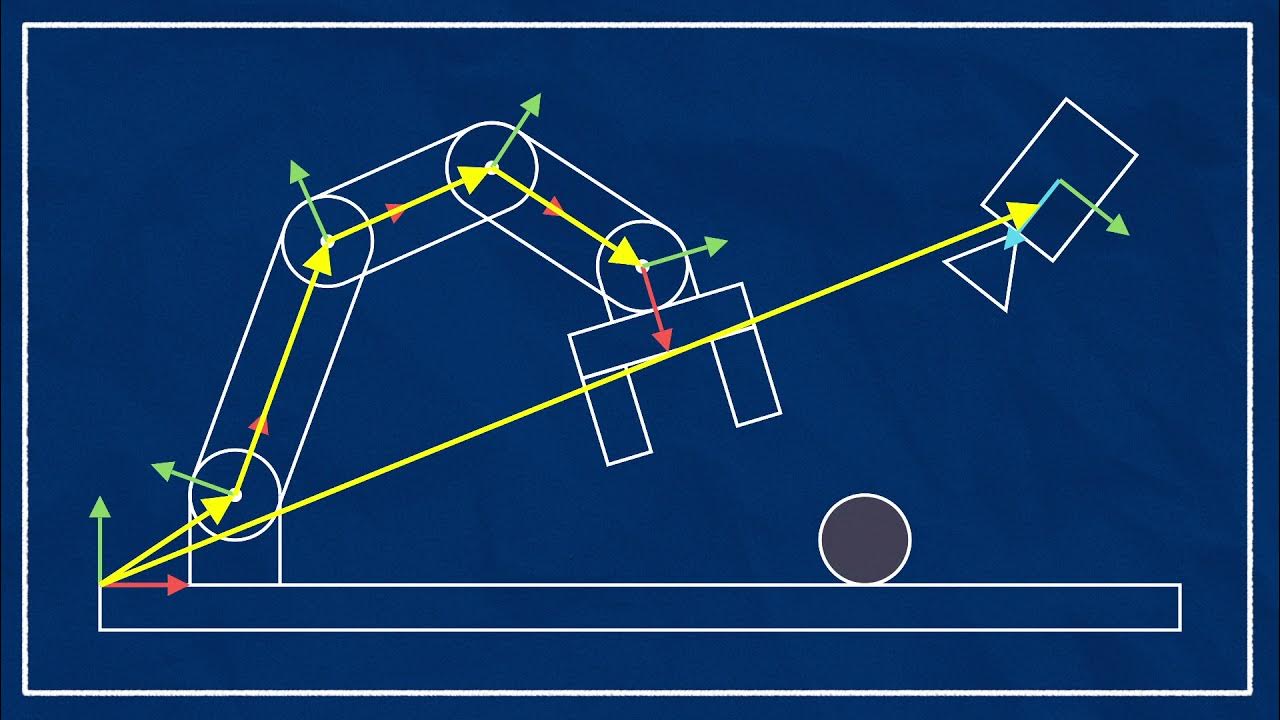An Introduction to ROS, the Robot Operating System: Intro to ROS (2/6)
Summary
TLDRThe video script delves into ROS (Robot Operating System), a middleware pivotal for robotics development. It explains ROS's evolution from an academic project to a cornerstone for mainstream industrial robots, emphasizing its transition from ROS 1 to the more robust, DDS-based ROS 2. The script outlines ROS's role in facilitating robot interaction with the real world through nodes, parameters, topics, services, and actions, highlighting its open-source community and diverse client libraries that support multi-language development in robotics.
Takeaways
- 🤖 'ROS' stands for Robot Operating System, but it's more accurately described as middleware for robotics.
- 🛠️ Robots are evolving from isolated industrial machines to integrated systems that work closely with humans in environments like supermarkets and urban areas.
- 📚 The history of ROS began over a decade ago with the Willow Garage project and is now led by Open Robotics, a nonprofit organization.
- 🌐 ROS is open-source and has a strong community that contributes to its development, with all projects available on GitHub.
- 🔧 ROS 2 is the next generation of ROS, designed to support the shift towards mainstream, commercial robotics applications.
- 🔗 ROS 1 and ROS 2 are generally not interoperable, but bridging solutions exist to allow for some compatibility.
- 💻 The core of ROS is its ability to facilitate communication across multiple computers and nodes within a robot system.
- 📈 ROS uses a dynamic data services (DDS) protocol for a robust messaging infrastructure, replacing the older hub-and-spoke design.
- 🛠️ The basic structure of a robot includes a computer, application, general-purpose libraries, a controller, and actuators or sensors.
- 🔄 ROS middleware enables the use of standard constructs like nodes, parameters, topics, services, and actions for robot development.
- 🔌 Client libraries for ROS allow for development in multiple programming languages, primarily C++ and Python, but also supporting third-party languages like JavaScript and Java.
Q & A
What does ROS stand for?
-ROS stands for Robot Operating System. It is more accurately described as middleware rather than an operating system.
What is the significance of ROS in the development of robots?
-ROS is significant as it provides a framework for robotics software development, allowing robots to operate with people closely, perform tasks like inventory management in supermarkets, and support various applications like self-driving cars and medical assistance.
How does ROS support the integration of robots into mainstream applications?
-ROS supports the integration of robots into mainstream applications by providing an open-source repository for general-purpose libraries, enabling robots to be connected to the same networks as other computers and be more accessible.
What is the history of ROS and how did it evolve?
-ROS originated from a project over a decade ago known as Willow Garage and is now spearheaded by Open Robotics. It has evolved from an academic exercise to support industrial, mainstream, and commercial products running on the open-source ROS infrastructure.
What is the difference between ROS 1 and ROS 2?
-ROS 2 is the next generation of ROS, designed to support where robotics is heading. It is not generally interoperable with ROS 1, but they can be bridged. ROS 2 has a more robust messaging infrastructure or protocol known as DDS (Dynamic Data Services), replacing the hub-and-spoke design of ROS 1.
How can one get started with ROS and find support?
-One can get started with ROS by visiting the ROS homepage, where they can download and install ROS, find support, and access a lot of documentation. The ROS community is very active, and projects are available on GitHub.
What is the conceptual model of how robots are put together?
-The conceptual model of a robot involves a computer running an application, which interfaces with technology through general-purpose libraries. This setup allows the robot to interact with the real world through a controller, driver, and sensors or actuators.
How does ROS fit into the mix of a robot's operation?
-ROS acts as middleware, providing applications that take advantage of rich libraries and enabling communication across multiple computers. It uses standard constructs like nodes, parameters, topics, services, and actions to facilitate robot operation.
What are the primary constructs exposed by ROS for robot operation?
-The primary constructs exposed by ROS for robot operation include nodes, parameters, topics, services, and actions. These constructs allow for communication, data exchange, and task execution within a robot or across different machines.
What are client libraries in the context of ROS, and why are they important?
-Client libraries in the context of ROS are programming languages that ROS exposes for developers to use, primarily C++ and Python. They are important as they allow developers to create nodes, subscribe to topics, and perform actions, facilitating the integration of multiple programming languages into one robot system.
Outlines

هذا القسم متوفر فقط للمشتركين. يرجى الترقية للوصول إلى هذه الميزة.
قم بالترقية الآنMindmap

هذا القسم متوفر فقط للمشتركين. يرجى الترقية للوصول إلى هذه الميزة.
قم بالترقية الآنKeywords

هذا القسم متوفر فقط للمشتركين. يرجى الترقية للوصول إلى هذه الميزة.
قم بالترقية الآنHighlights

هذا القسم متوفر فقط للمشتركين. يرجى الترقية للوصول إلى هذه الميزة.
قم بالترقية الآنTranscripts

هذا القسم متوفر فقط للمشتركين. يرجى الترقية للوصول إلى هذه الميزة.
قم بالترقية الآنتصفح المزيد من مقاطع الفيديو ذات الصلة

Simple Turtlebot Simulation in ROS | ROS 101 | ROS Tutorials for Beginners | Lesson 3

An Introduction to ROS, the Robot Operating System: Install and put together (3/6)

The ROS Transform System (TF) | Getting Ready to Build Robots with ROS #6

Learn about ROS Drivers for R2000 and R2300 LiDAR Sensors

SEJARAH DAN PERKEMBANGAN ROBOT DI DUNIA

System Programs
5.0 / 5 (0 votes)
